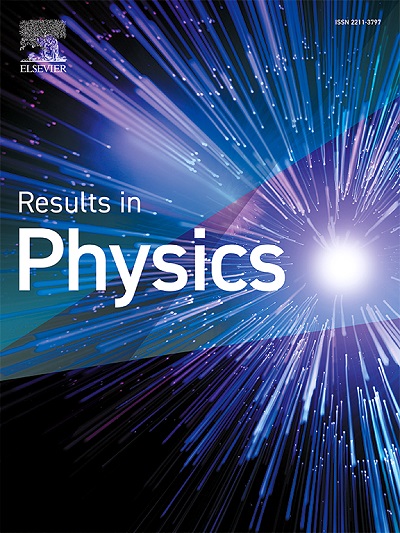Removal of the iron oxide layer from a fuel tank wall: Effect of nozzle distance and impact angle on water jet pressure
IF 4.4
2区 物理与天体物理
Q2 MATERIALS SCIENCE, MULTIDISCIPLINARY
引用次数: 0
Abstract
The development of hydraulic technology has led to the increasing application of high-pressure water jets in industrial fields such as metal surface cleaning, cutting, etc., because of its environmental friendliness. This study used multiphase fluid dynamics simulation to investigate the impact pressure of water jets acting on the fuel tank surface with changes in the nozzle distance and impact angle of the nozzle to the tank wall. A predicting model of the impact pressure based on these two investigated variables was also built as a basis for the calculation and design of hydraulic systems for tank cleaning. The results show that when the nozzle distance and impact angle increase, a higher pressure is required at the nozzle inlet to clean the fuel tank wall. The effects of these two factors on the water jet impact pressure are independent of each other, and both have linear functions. The findings in this work can be applied to all types of industrial tanks with different sizes and shapes, such as circles, ellipses, rectangles, trapezoids, etc., as well as various tank materials, such as iron, steel, aluminum alloy, bronze, etc.
燃油箱壁上氧化铁层的去除:喷嘴距离和冲击角对水射流压力的影响
随着液压技术的发展,高压水射流因其环境友好性,在金属表面清洗、切割等工业领域的应用越来越多。本研究采用多相流体力学模拟方法,研究了随着喷管距离和喷管与油箱壁面碰撞角度的变化,射流作用在油箱表面的冲击压力。建立了基于这两个变量的冲击压力预测模型,为油罐清洗液压系统的计算和设计提供了依据。结果表明,随着喷嘴距离和冲击角的增大,喷嘴入口需要更高的压力来清洗油箱壁面。这两个因素对水射流冲击压力的影响是相互独立的,都具有线性函数关系。这项工作的发现可以应用于各种尺寸和形状的工业储罐,如圆形、椭圆形、矩形、梯形等,以及各种储罐材料,如铁、钢、铝合金、青铜等。
本文章由计算机程序翻译,如有差异,请以英文原文为准。
求助全文
约1分钟内获得全文
求助全文
来源期刊

Results in Physics
MATERIALS SCIENCE, MULTIDISCIPLINARYPHYSIC-PHYSICS, MULTIDISCIPLINARY
CiteScore
8.70
自引率
9.40%
发文量
754
审稿时长
50 days
期刊介绍:
Results in Physics is an open access journal offering authors the opportunity to publish in all fundamental and interdisciplinary areas of physics, materials science, and applied physics. Papers of a theoretical, computational, and experimental nature are all welcome. Results in Physics accepts papers that are scientifically sound, technically correct and provide valuable new knowledge to the physics community. Topics such as three-dimensional flow and magnetohydrodynamics are not within the scope of Results in Physics.
Results in Physics welcomes three types of papers:
1. Full research papers
2. Microarticles: very short papers, no longer than two pages. They may consist of a single, but well-described piece of information, such as:
- Data and/or a plot plus a description
- Description of a new method or instrumentation
- Negative results
- Concept or design study
3. Letters to the Editor: Letters discussing a recent article published in Results in Physics are welcome. These are objective, constructive, or educational critiques of papers published in Results in Physics. Accepted letters will be sent to the author of the original paper for a response. Each letter and response is published together. Letters should be received within 8 weeks of the article''s publication. They should not exceed 750 words of text and 10 references.
 求助内容:
求助内容: 应助结果提醒方式:
应助结果提醒方式:


